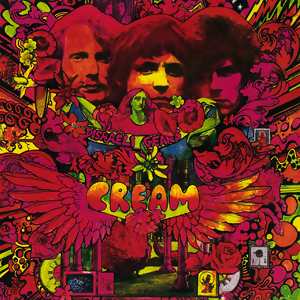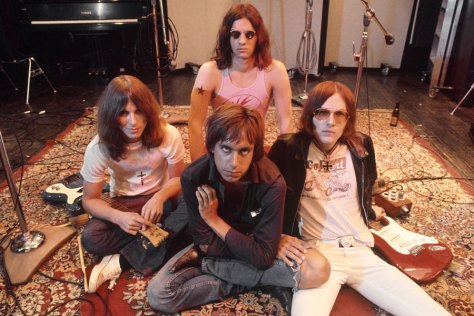By Dennis Hartley
(Originally posted on Digby’s Hullabaloo on March 4, 2017)

Hard to believe that it was 50 years ago today (well, officially, as of June 1st) that Sgt. Pepper taught the band to play around with vari-speeding, track bouncing and ambiophonics. Eh…wot?
Considering the relative limitations of recording technology at the time, the sonic wizardry and hardware MacGyvering that resulted in The Beatles’ groundbreaking Sgt. Pepper’s Lonely Hearts Club Band continues to amaze and fascinate musicians, studio engineers and music fans. For that matter, I bet any Beatle fan would happily buzz in through the bathroom window to have been a fly on the wall at any Beatles session, for any of their albums. Perhaps that’s not the best analogy.
That imagery aside, there is a “next best thing”, thanks to composer and musicologist Scott Freiman, who has created a series of multimedia and film presentations called Deconstructing the Beatles. His latest exploration focuses on the Sgt. Pepper song cycle. Some engagements are personal appearances; others limited-run film versions of the lecture. My review is based on the filmed version, which ran here in Seattle last weekend (you can find upcoming cities/dates here).
Freiman kicks off with deep background on the February 1967 release of the double ‘A’ sided 45 “Strawberry Fields Forever” / “Penny Lane” (although he doesn’t deconstruct the recording sessions as he does for the Sgt. Pepper tracks). I think this is a perfect choice for a launching pad, as those two songs were not only crucial signifiers of the band’s continuing progression from the (seemingly) hard-to-top Revolver, but originally intended to be included as part of Sgt. Pepper.
The remaining three-quarters of the film is a track-by-track journey through the album (in original running order, of course). By playing snippets of isolated audio tracks and subtly stacking them until they transmogrify into their familiar finished form, as well as supplementing with archival photos and flow charts annotating how tracks were reduced and mixed down, Freiman is able to give the viewer a fairly good peek into the unique creative process that went into the Sgt. Pepper sessions. Freiman’s running commentary hits the sweet spot between scholarly and entertaining.
I was a little disappointed that he gives my two favorite cuts, “Getting Better” and “Fixing a Hole” short shrift; especially when compared to the amount of time he spends fixating on three cuts in particular: “She’s Leaving Home”, “Within You, Without You”, and “A Day in the Life”. Not that those aren’t all classics, but you can’t have everything. After all, art is subjective, right?
I haven’t had the pleasure of seeing Mr. Freiman doing one of his presentations in-person; I imagine it’s more dynamic and engaging than watching what is essentially a filmed lecture (think An Inconvenient Truth). If you’re expecting something along the lines of The Beatles Anthology, this may not be for you. Still, the Fab force is strong in this one, and he obviously holds a genuine affection for the music, which keeps the proceedings from sinking into an academic snooze fest.
Side 2: It was a very good year
While Sgt. Pepper certainly deserves the accolades it has received over the last 5 decades, 1967 was a watershed year for a lot of bands; there was definitely something in the air (or the punch).
Here are 10 more fabulous albums that are blowing out 50 candles this year (goddam, I’m old…).

Cream–Disraeli Gears…Clapton’s psych-blues zenith, Bruce and Baker’s dangerous rhythms, Pete Brown’s batshit crazy lyrics, lorded over by producer/future Mountain man Felix Pappalardi. Best cuts: “Sunshine of Your Love”, “Swlabr” (fuck you, Spellcheck), and “Tales of Brave Ulysses”.

The Doors–The Doors…“He took a face, from the ancient gallery. And he walked on down the hall.” And music would never be the same. Best cuts: All of them.

Jefferson Airplane– Surrealistic Pillow…Luv ‘n’ Haight. Remember, I want you to toss the radio into the bathtub when “White Rabbit” peaks. Get it? Got it? Good! Best cuts: “Somebody to Love”, “White Rabbit”, and “Plastic Fantastic Lover”.

Jimi Hendrix Experience– Are You Experienced?…Not necessarily stoned, but beautiful. There ain’t no life, nowhere. And you will never hear surf music, again. Best cuts: “Purple Haze”, “Love or Confusion”, “May This Be Love”, “I Don’t Live Today”, “Third Stone From the Sun”, and “Are You Experienced?”.

The Kinks– Something Else by the Kinks…The genius of Ray Davies cannot be overstated. Every song is an immersive picture postcard of the traditional English life. Brilliant. Best cuts: “Waterloo Sunset”, “Lazy Old Sun”, “Death of a Clown”, “David Watts”, “Afternoon Tea”.
 The Moody Blues– Days of Future Passed…Mellotrons R Us. Symphonic rock before anyone thought it was even possible. A thing of beauty. Best cuts: “Tuesday Afternoon” and “Nights in White Satin”.
The Moody Blues– Days of Future Passed…Mellotrons R Us. Symphonic rock before anyone thought it was even possible. A thing of beauty. Best cuts: “Tuesday Afternoon” and “Nights in White Satin”.

Pink Floyd– The Piper at the Gates of Dawn…Syd Barrett, before the drugs kicked in for keeps. He’s got a bike, you can ride it if you like. Space rock, ominous dirges and proto prog supreme. Best cuts: “Astronomy Domine”, “Flaming”, “Interstellar Overdrive”, and “Bike”.

Procol Harum– Procol Harum…Gary Brooker’s distinctive voice, Robin Trower’s peerless fretwork, Matthew Fisher’s signature organ riffs and Keith Reid’s wry and literate lyrics made for a heady, proggy brew that didn’t quite sound like anyone else at the time. Still doesn’t, actually. Best cuts: “Conquistador”, “She Wandered Through the Garden Fence”, and “Repent, Walpurgis”.

The Velvet Underground– The Velvet Underground and Nico…In which Lou Reed, John Cale, Sterling Morrison, Nico, and Moe Tucker invited the flower children to attend New York art school. However, no one enrolled until about 10 years later, when it came to be called punk rock. Best cuts: “I’m Waiting For the Man”, “All Tomorrow’s Parties”, “Heroin”, and “Femme Fatale”.

The Who– The Who Sell Out…A kind of warm-up for Tommy, The Who’s concept album was constructed to simulate a pirate radio station, with interstitial spoof ads and station jingles linking the cuts together. A very strong song cycle for Pete Townshend. Best cuts: “Armenia City in the Sky”, “Tattoo”, “I Can See For Miles”, “Our Love Was”, “I Can’t Reach You”, and “Sunrise”.
BONUS TRACK!
There were also a lot of memorable hit singles on the pop charts that year. Here’s one of my favorites from the summer of 1967:



 1947-2016
1947-2016



